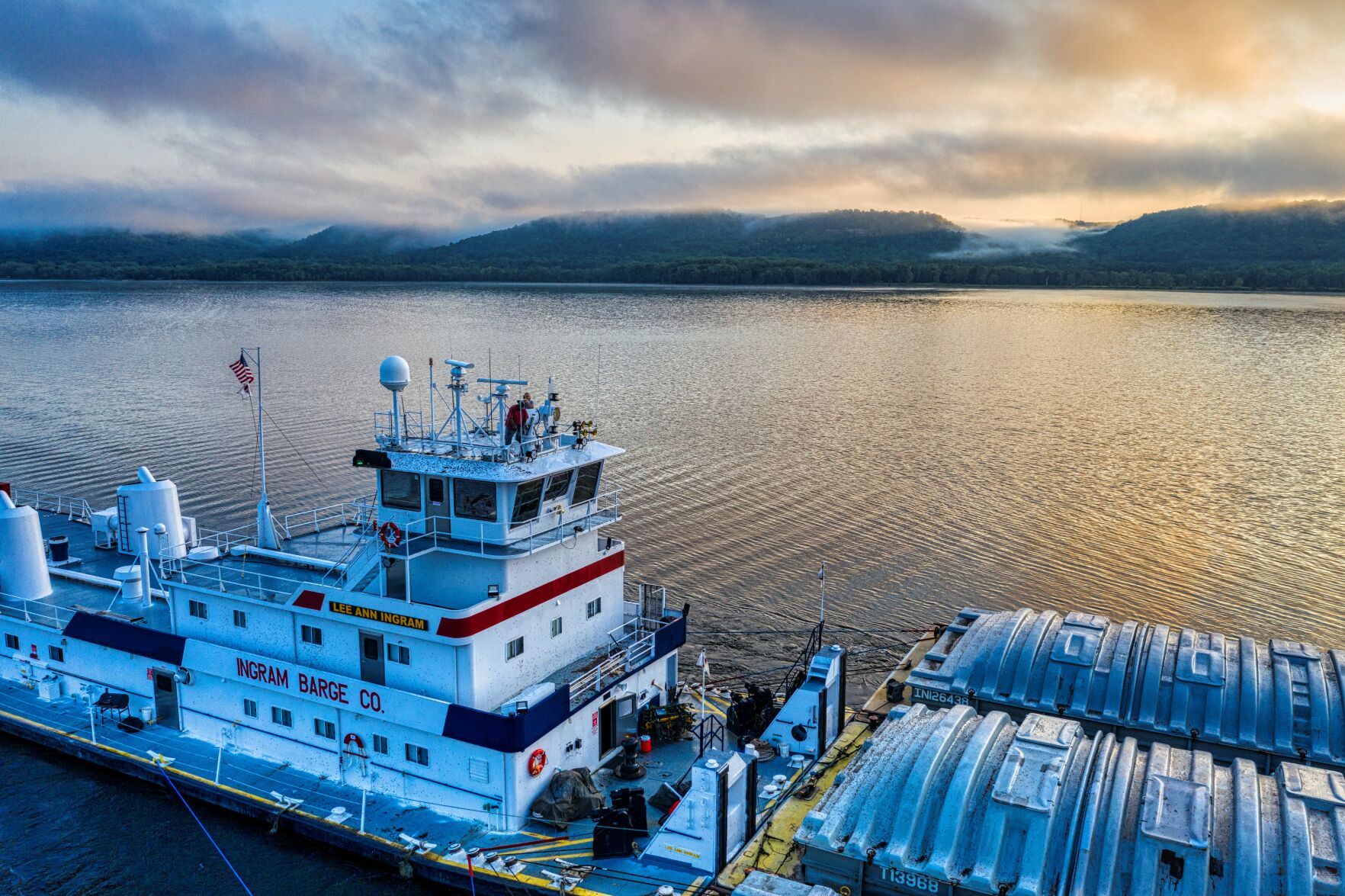As the soybean and corn harvests approach full swing, the resiliency of the inland waterway system is being tested by the damage of Hurricanes Ida and Nicholas. Ken Eriksen, senior vice president-agribusiness at IHS Markit, said his sources tell him the impacts to barge movements of Hurricanes Ida and Nicholas have been “far worse than Katrina,” but have also boosted barge rates.
Five or six of the nine major grain elevators in the Lower Mississippi River region have reopened for business. The ADM facility in Destrehan, Louisiana, may be reopening soon. The CHS facility in Myrtle Grove, Louisiana, the farthest south on the river, is back online, according to Eriksen. The Cargill elevator in Reserve, Louisiana, could be offline for several months as it undergoes extensive repairs to loading equipment.
According to Mike Steenhoek, executive director of the Soy Transportation Coalition, in the week ending Sept. 16 about 5 million bushels of soybeans left the Gulf—or about two ships’ worth. In the week before Ida hit, it was about 10 million bushels. “The grain movement has been pretty anemic,” he told The Waterways Journal. “It’s not operating on all cylinders.”
Along the western Gulf Coast, the United States Department of Agriculture has granted emergency waivers for some barges to load wheat directly onto ships without inspections, if the parties request it.
Barge rates
Barge rates are rising as the harvest continues and equipment is being repaired. Fortunately, said Eriksen, storage capacity is large as an active export year had resulted in very low September stocks of corn and beans. Some elevators and barges are storing lower-quality grain while waiting for better corn or beans for blending.
Beginning Aug. 31, “basis in the Gulf went away” as grain exports temporarily halted in the Lower Mississippi. Basis is the difference between Chicago Board of Trade grain prices and those paid at the elevator. Export projections have already been lowered for October and November due to the logistics snarls, he said.
The real barge rate increases haven’t hit yet as barge operators are honoring existing contracts, Eriksen said. But as these contracts expire and the harvest peaks, customers will turn more to the spot market and rates will skyrocket. Barge rates are about 750% over tariff now and could reach 1,000% over tariff by the height of harvest season.
All modes stretched
The blows from Ida and Nicholas came at a time when every other transportation mode was already stressed by COVID-19 restrictions and trade imbalances.
Railroads are stretched to their limits. Rail cars are charging $1,400 per car in certain markets. Union Pacific recently halted container movements inland from the West Coast while a backlog was sorted out. The move pushed container logjams back into some ports, though, contributing to a recent total of up to 70 ships waiting to unload at the ports of Los Angeles and Long Beach.
Trucking ton-miles
Trucking has been experiencing driver shortages for years, and the sharp drop in road miles in the initial stages of the COVID-19 pandemic pushed a wave of Baby Boomer retirees out the door. Pandemic restrictions slowed truck traffic even in the face of recovering demand. The American Trucking Associations reported Sept. 17 that August saw the first increase in the seasonally adjusted Truck Tonnage Index since March, despite growing demand for consumer goods.
Ocean carrier costs are substantially adding to price inflation. According to a recent Bloomberg report, a 40-foot container that cost less than $2,000 to move from Asia to the U.S. in 2020 costs more than $25,000 today. Desperate retailers and importers are bidding for stray empty slots on container vessels, paying astronomical prices on the spot market. Container ocean carriers that collectively made about $15 billion in net profits in 2020 are set to make more than $100 billion this year.
A rapid drop in water levels plus shoaling at Mile 10 of the McClellan-Kerr Arkansas River Navigation System, where a branch of the Arkansas River meets the White River, near the White’s junction with the Mississippi River, has closed it to commercial tows. Emergency dredging began Sept. 22, but American Commercial Barge Lines warned its customers via its weekly email newsletter, Currents, that no estimate for opening has been given and the closure could extend into the following week. If Mississippi River levels rise and water backs up into the lock, it could reopen sooner.
Experts say the logistics issues will continue into next year and perhaps beyond.
David Murray can be reached at [email protected].




